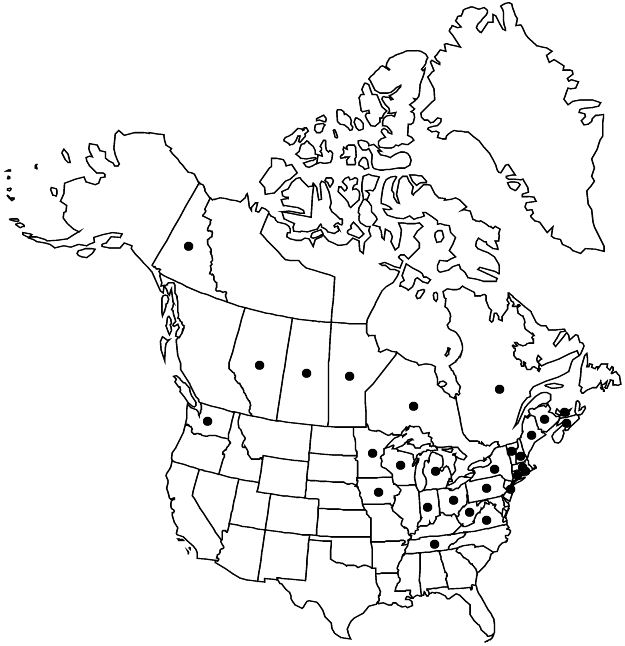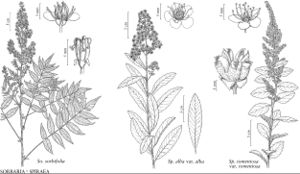Difference between revisions of "Sorbaria sorbifolia"
in P. F. A. Ascherson, Fl. Brandenburg 1: 177. 1860.
FNA>Volume Importer |
imported>Volume Importer |
||
| (3 intermediate revisions by 2 users not shown) | |||
| Line 1: | Line 1: | ||
{{Treatment/ID | {{Treatment/ID | ||
|accepted_name=Sorbaria sorbifolia | |accepted_name=Sorbaria sorbifolia | ||
| − | |accepted_authority=(Linnaeus) A. Braun | + | |accepted_authority=(Linnaeus) A. Braun |
|publications={{Treatment/Publication | |publications={{Treatment/Publication | ||
|title=in P. F. A. Ascherson, Fl. Brandenburg | |title=in P. F. A. Ascherson, Fl. Brandenburg | ||
| Line 10: | Line 10: | ||
|special_status={{Treatment/ID/Special_status | |special_status={{Treatment/ID/Special_status | ||
|code=F | |code=F | ||
| − | |label= | + | |label=Illustrated |
}}{{Treatment/ID/Special_status | }}{{Treatment/ID/Special_status | ||
|code=I | |code=I | ||
| Line 18: | Line 18: | ||
|name=Spiraea sorbifolia | |name=Spiraea sorbifolia | ||
|authority=Linnaeus | |authority=Linnaeus | ||
| + | |rank=species | ||
|publication_title=Sp. Pl. | |publication_title=Sp. Pl. | ||
|publication_place=1: 490. 1753 | |publication_place=1: 490. 1753 | ||
| Line 24: | Line 25: | ||
|name=Sorbaria sorbifolia var. stellipila | |name=Sorbaria sorbifolia var. stellipila | ||
|authority=Maximowicz | |authority=Maximowicz | ||
| + | |rank=variety | ||
}} {{Treatment/ID/Synonym | }} {{Treatment/ID/Synonym | ||
|name=S. stellipila | |name=S. stellipila | ||
| − | |authority= | + | |authority= |
| + | |rank=species | ||
}} | }} | ||
|hierarchy=Rosaceae;Rosaceae subfam. Amygdaloideae;Rosaceae tribe Sorbarieae;Sorbaria;Sorbaria sorbifolia | |hierarchy=Rosaceae;Rosaceae subfam. Amygdaloideae;Rosaceae tribe Sorbarieae;Sorbaria;Sorbaria sorbifolia | ||
| Line 42: | Line 45: | ||
|elevation=10–500 m | |elevation=10–500 m | ||
|distribution=Alta.;Man.;N.B.;N.S.;Ont.;P.E.I.;Que.;Sask.;Yukon;Conn.;Ind.;Iowa;Maine;Mass.;Mich.;Minn.;N.H.;N.J.;N.Y.;Ohio;Pa.;R.I.;Tenn.;Vt.;Va.;Wash.;W.Va.;Wis.;Asia (n China;Japan;Korea;Manchuria;e Siberia);introduced also in Europe. | |distribution=Alta.;Man.;N.B.;N.S.;Ont.;P.E.I.;Que.;Sask.;Yukon;Conn.;Ind.;Iowa;Maine;Mass.;Mich.;Minn.;N.H.;N.J.;N.Y.;Ohio;Pa.;R.I.;Tenn.;Vt.;Va.;Wash.;W.Va.;Wis.;Asia (n China;Japan;Korea;Manchuria;e Siberia);introduced also in Europe. | ||
| + | |introduced=true | ||
|discussion=<p><i>Sorbaria sorbifolia</i> is cultivated in North America and Europe. The plants are always colonial and are capable of becoming adventive.</p> | |discussion=<p><i>Sorbaria sorbifolia</i> is cultivated in North America and Europe. The plants are always colonial and are capable of becoming adventive.</p> | ||
|tables= | |tables= | ||
| Line 51: | Line 55: | ||
-->{{#Taxon: | -->{{#Taxon: | ||
name=Sorbaria sorbifolia | name=Sorbaria sorbifolia | ||
| − | + | |authority=(Linnaeus) A. Braun | |
| − | |authority=(Linnaeus) A. Braun | ||
|rank=species | |rank=species | ||
|parent rank=genus | |parent rank=genus | ||
| Line 66: | Line 69: | ||
|publication title=in P. F. A. Ascherson, Fl. Brandenburg | |publication title=in P. F. A. Ascherson, Fl. Brandenburg | ||
|publication year=1860 | |publication year=1860 | ||
| − | |special status= | + | |special status=Illustrated;Introduced |
| − | |source xml=https:// | + | |source xml=https://bitbucket.org/aafc-mbb/fna-data-curation/src/2e0870ddd59836b60bcf96646a41e87ea5a5943a/coarse_grained_fna_xml/V9/V9_664.xml |
|subfamily=Rosaceae subfam. Amygdaloideae | |subfamily=Rosaceae subfam. Amygdaloideae | ||
|tribe=Rosaceae tribe Sorbarieae | |tribe=Rosaceae tribe Sorbarieae | ||
Latest revision as of 22:58, 5 November 2020
Plants 10–30 dm. Leaves: blade 14–30 × 5–17 cm; leaflets (9–)11–21(–29), oblong-ovate to elliptic, (25–)35–75(–95) × (8–)12–20(–25) mm, abaxial surface glabrous or ± sparsely stipitate-stellate, adaxial with some simple hairs near margins, otherwise glabrous. Inflorescences (7–)10–15(–34) × (3–)4–7(–14) cm. Pedicels (and axes) usually puberulent, stipitate-glandular, less often stipitate-stellate. Flowers 10–14 mm diam. (anther tip to tip); hypanthium puberulent, hirtellous, stellate, or glabrous; sepals ovate to oblong-ovate, margins often glandular-serrate; petals ovate to orbiculate, 2.7–4.3 × 2.1–3.4 mm; stamens 20–35[–50], 2–6.5 mm (of variable length); ovaries sericeous, styles 1.3–3.5 mm. Follicles 4.5–6 mm, sericeous. 2n = 36.
Phenology: Flowering Jun–Jul.
Habitat: Roadsides, old fields, waste areas, overgrown forest margins
Elevation: 10–500 m
Distribution

Introduced; Alta., Man., N.B., N.S., Ont., P.E.I., Que., Sask., Yukon, Conn., Ind., Iowa, Maine, Mass., Mich., Minn., N.H., N.J., N.Y., Ohio, Pa., R.I., Tenn., Vt., Va., Wash., W.Va., Wis., Asia (n China, Japan, Korea, Manchuria, e Siberia), introduced also in Europe.
Discussion
Sorbaria sorbifolia is cultivated in North America and Europe. The plants are always colonial and are capable of becoming adventive.
Selected References
None.
